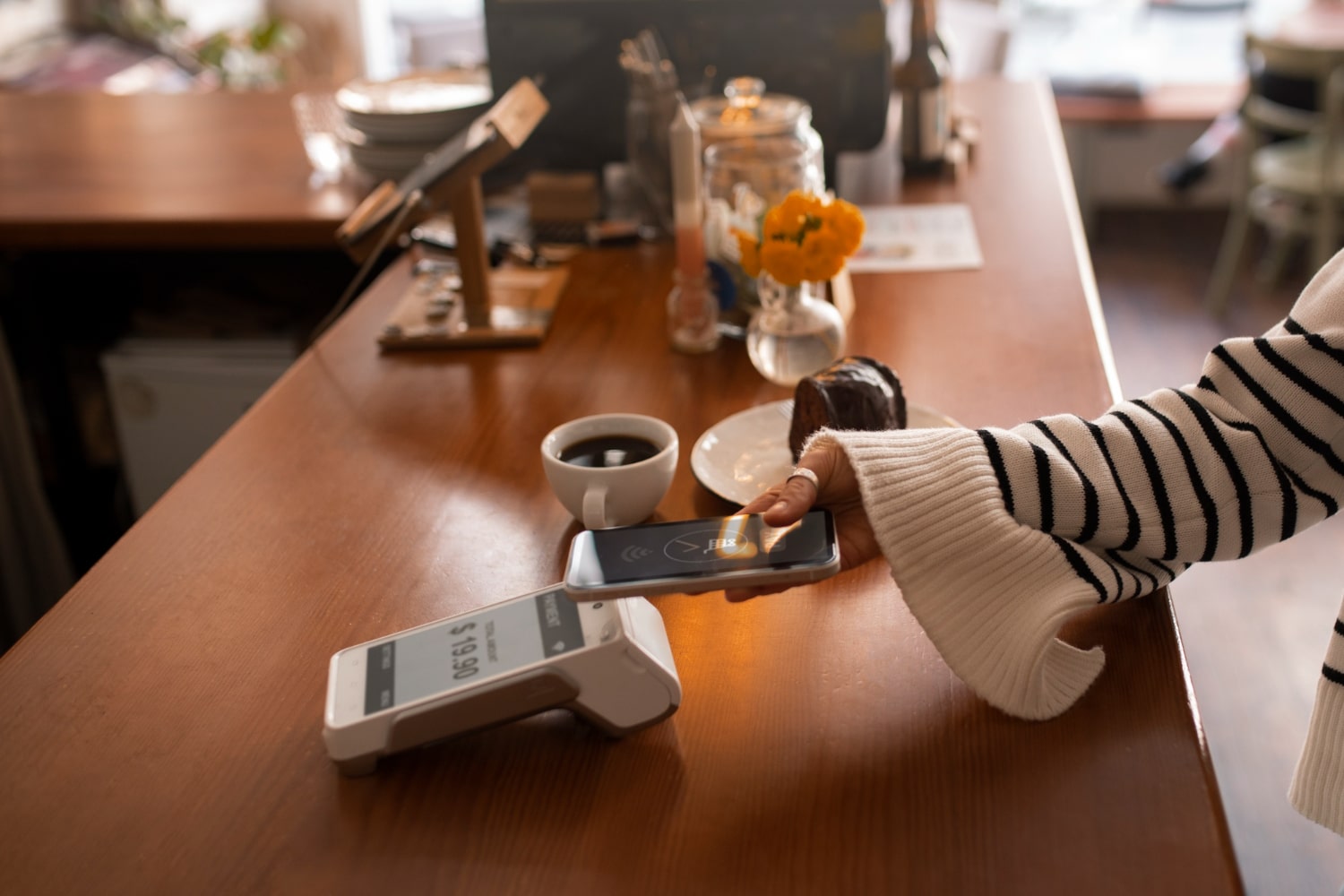
Bistro vs Cafe: What's the Difference?
Ask ten people about the difference between a bistro and a café, and you'll get ten different answers. Some reckon it's all about the food. Others insist it's the vibe. A few will throw their hands up and say there's no real difference anymore.
Here's the truth: the differences are massive, and they matter.
Whether you're thinking about opening your own place or just want to understand why that charming spot down the road charges £18 for fish and chips while the coffee shop next door sells sandwiches for £6, you need to grasp these distinctions. At KyivWorkshop, we've watched enough hospitality ventures succeed and fail to know that understanding your concept isn't optional-it's survival.
Get it wrong, and you'll find yourself serving bistro-priced food in a café atmosphere, wondering why nobody comes back.
Key Takeaways:
- Service models split them completely: bistros use table service for longer visits, cafés rely on counter service for quick turnover.
- The money flows differently: bistros make more per customer but serve fewer people, cafés chase volume with smaller margins.
- Design philosophies clash: bistros create intimate spaces for lingering, cafés build productive environments for working.
- Food approaches diverge: bistros cook complex meals from scratch, cafés focus on quick preparation and portability.
- Historical roots still matter: bistros grew from neighborhood taverns, cafés from intellectual meeting houses.
Where It All Began?
Both concepts sprouted from French soil, but they couldn't have grown more differently.
Bistros supposedly got their name during a peculiar moment in history. Russian troops occupied Paris after Napoleon's downfall, and these soldiers had zero patience for slow French service. "Bystry! Bystry!" they'd bark-Russian for "hurry up!"-at bewildered tavern keepers. The name stuck. These became working-class joints where you could get a solid meal without breaking the bank or dressing up.
Cafés took the intellectual route. Think smoky rooms where Hemingway nursed whiskey and Sartre debated existence over endless cups of coffee. Café de Flore. Les Deux Magots. These weren't just eating spots-they were cultural headquarters where ideas got born and movements took shape.
The split matters because it explains modern expectations. Walk into a bistro expecting laptop-friendly WiFi and power outlets, and you'll be disappointed. Try ordering a three-course meal at a busy café, and you'll get strange looks.
Reading the Room
The moment you step inside, you know which one you're in.
Bistros work hard to feel intimate. Tables sit close enough that you might accidentally eavesdrop on neighboring conversations. Lighting comes from table lamps, candles, or vintage fixtures that cast warm pools of light. Everything feels slightly worn in a good way-like your favorite jacket.
The lighting choices matter more than most people realize. Bistros deliberately choose warm, dim settings that make customers want to linger over wine and conversation. Understanding how different types of lighting affect customer behavior can make or break an establishment-bright fluorescents kill romance faster than a fire alarm.
Cafés flip the script entirely. Big windows. Light colors everywhere. Open layouts that let you see from front to back. Everything designed to feel energetic and productive rather than intimate and romantic.

Menu Philosophy
Here's where the differences become crystal clear.
Bistro menus read like love letters to traditional cooking. Dishes that take hours to prepare properly. Braised short ribs. Duck confit. House-made charcuterie. Items that justify spending £25-35 per person and staying for two hours.
Smart operators know that menu presentation sells almost as much as the food itself. Whether you're describing slow-cooked osso buco or highlighting single-origin coffee beans, getting your food for menus descriptions right determines whether customers order instinctively or scan quickly and bolt.
Café menus tell completely different stories. Speed beats complexity every time. Avocado toast. Paninis. Soup and salad combos. Things that can be prepped ahead or assembled quickly during the lunch rush.

Fast vs Slow by Design
The service model shapes absolutely everything about the customer experience.
Bistros operate like proper restaurants. Someone seats you. A server appears with menus and water. Orders get taken at your table. Food arrives when ready, often with explanations about preparation or ingredients. The bill comes only when you ask for it.
This slow-service approach isn't inefficiency-it's strategy. Bistro customers expect to spend 90 minutes or more eating and socializing. Staff build relationships with regulars, remember preferences, and make recommendations that increase average spending.
Cafés work completely backwards. Queue at the counter. Order and pay upfront. Find your own table. Someone might bring food over, or you might collect it yourself. The interaction ends once you've paid, and you control how long you stay.
Both systems work perfectly-for their intended purposes. Try to rush bistro service, and you'll destroy the experience. Slow down café service, and you'll create bottlenecks that send customers elsewhere.
Physical Design
Walk through a successful bistro and notice how every design choice supports longer visits. Heavy wooden furniture that's comfortable for extended sitting. Soft seating options. Tables sized for proper place settings rather than laptops.
The physical presentation of your concept matters enormously. Quality menu covers made from real wood or leather reinforce a bistro's commitment to quality, while simple laminated menus suit a café's casual, practical approach. Customers notice these details instantly, even if they can't articulate why one place feels more premium than another.
Café design prioritizes flexibility and turnover. Lightweight chairs that stack for cleaning. Tables at various heights for different activities. Charging stations scattered throughout. Everything optimized for customers who might stay 20 minutes or three hours.

The Business Reality
The numbers tell the real story about why these models exist.
Running a bistro means accepting higher costs for better margins. Professional kitchen equipment costs serious money. Skilled cooks command good wages. Wine inventory ties up capital. Initial investment often hits £150,000-300,000 before you serve your first customer.
But bistros can charge premium prices. Average tickets run £25-40 per person, and wine sales boost profit margins significantly. Serve 80 covers on a busy night, and you've done well. The model rewards quality over quantity.
Technology helps modern operations run smoother. QR code displays for digital menus work brilliantly in café environments where speed matters most, though some bistros now use these systems to reduce labor costs while keeping personal service levels high.

Modern Reality
Traditional boundaries keep shifting as operators experiment with hybrid concepts.
All-day bistros serve coffee and pastries until 11 am, then switch to full lunch and dinner service. Upscale cafés expand evening hours with wine and small plates. Some places change identity completely based on time of day-café by morning, bistro by night.
Coffee culture has revolutionized everything. Even traditional bistros invest heavily in espresso programs because excellent coffee drives morning traffic and complements evening wine service. Meanwhile, ambitious cafés add dinner service to compete for evening crowds.
The smartest operators ignore labels entirely. They focus on serving their specific market consistently and profitably, borrowing elements from whatever model helps them succeed.
Making Your Choice
Several practical factors should guide your decision.
Location determines almost everything. Bistros thrive in established residential neighborhoods with evening foot traffic. Cafés succeed near offices, universities, transport hubs-anywhere people need quick service during busy days.
Your target market shapes every other decision. Bistros appeal to customers seeking social experiences, willing to spend time and money for quality food and service. Cafés attract people prioritizing convenience-commuters grabbing breakfast, students needing study space, business people conducting informal meetings.
Consider your own background honestly. Running a bistro requires culinary skills, wine knowledge, and staff management experience. Café operations demand efficiency, multitasking, and tolerance for constant customer turnover throughout long days.




Leave a comment
This site is protected by hCaptcha and the hCaptcha Privacy Policy and Terms of Service apply.